Stitch 'n Bitch: The Knitter's Handbook (28 page)
Read Stitch 'n Bitch: The Knitter's Handbook Online
Authors: Debbie Stoller

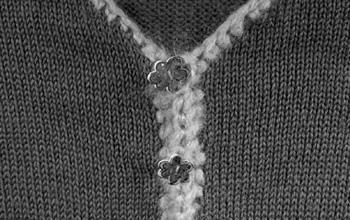
The Chain Stitch
The
chain stitch
is the foundation for most crochet work, but you can use it in your knitting to make drawstrings or tie cords to attach to your projects. Here’s how it’s done:
IN THE LOOP: CROCHET TIPS
• In knitting, your wrists stay pretty much stable as you manipulate the yarn and knitting needles, but a crochet hook is twisted, turned, and pulled, all by the motions of your wrist.
• Crocheting requires you to constantly pull loops of yarn through your previously formed loops. So, you want to leave enough space in those loops to pass a crochet hook through. When you start out, you might try leaving them purposely loose until you get the hang of how small they can go and still allow your hook to fit through.
• When you make a chain stitch or a single crochet, you are always working from right to left—like reading Hebrew or Hindi. The crab stitch is the one exception: It is made from left to right.

1
Make a slip knot about 6 inches from the end of your yarn and hang it over your crochet hook. Tighten the slip knot at the neck of the crochet hook, but leave it a bit loose, like the way the sales rep at the office Christmas party might wear his tie after his third eggnog. Hold the crochet hook in your right hand and the ball end of the yarn in your left, as you would for Continental knitting. With the thumb and middle finger of your left hand, lightly grasp the knot part of the slip knot.
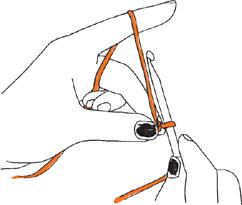
2
With the hook facing up, wrap the yarn over the front of the needle clockwise, from right to left.
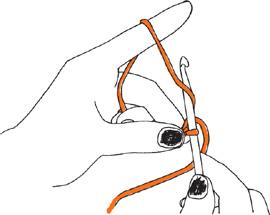
3
Twist the crochet hook so that the hook faces down and toward the knot, and pull the yarn through the loop.
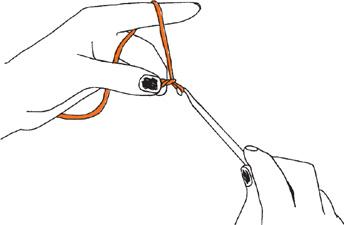
4
Twist the hook so that the hook part is facing up again, wrap the yarn as in step 2, and pull another loop through. In this way, each loop becomes part of a “chain” of stitches. And that’s all there is to it.
Single crochet
can be used to add a decorative edge, but it must be made into already existing loops, like the edge of your knitting, or a crochet chain. To learn this technique, first make a foundation chain of about 20 stitches, so you’ll have something to crochet into.
1
Slip your crochet hook through the second chain stitch from the hook, wrap the yarn around it clockwise, from right to left, and pull the loop through one loop. You now have two loops on your crochet hook.

2
Wrap the yarn around the crochet hook again, and this time pull it through
both
the loops on the hook.
Single crochet made. Move on to the next chain stitch.

Basically, the
crab stitch
is single crochet, but going from left to right instead of right to left, as you normally would. It’s used around the edges of very open or loosely knit fabric, to stabilize it.
1
Insert a crochet hook into the edge of your knitting. Wrap the yarn around your hook clockwise, and pull a loop through.
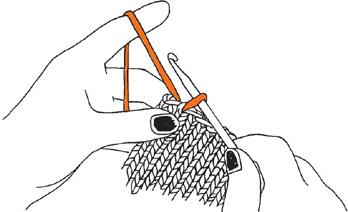
2
Slide your crochet hook back into the fabric, in a space to the right of your last crab stitch. Wrap the ball end of the yarn clockwise around your crochet hook.
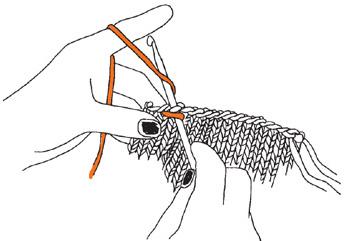
3
Pull the yarn through, so that you now have two loops on your crochet hook. Wrap your yarn one last time around the crochet hook, clockwise, then pull it through both loops. That’s all, folks.

THE STITCH DOCTOR’S GUIDE TO FIXING MISTAKES
In my Stitch ’n Bitch group, I am known as the “stitch doctor.” Whenever anyone realizes that they suddenly have one stitch too few on their needles, or that they purled when they should have knit, they hand their work over to me. With my trusty crochet hooks at my side, I roll up my sleeves and go about performing my special brand of corrective surgery, setting mismade stitches right again. I find it strangely satisfying to puzzle out tangled stitches, re-create a stitch lost long ago seemingly out of thin air, or magically retwist incorrectly twisted cables.